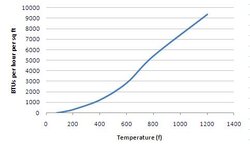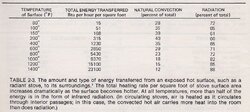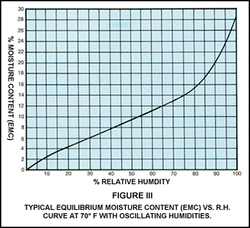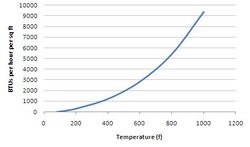In this thread, I mentioned some problems I was having with our new/used Oslo, primarily that the stove seems starved for air. So, taking advice from forum members I totally re-did our chimney, going from 8" single wall pipe (outside too!) to 6" double wall/class A pipe. Needless to say, it was not cheap!
The first fire we lit after re-doing the chimney burned well, but it was only 28 that night so I expected it to do well. Here in our part of Oregon, we have fairly mild winters, I'd say our overnight lows average between 28-36. The past couple of nights have been more typical, overnight lows of 34, 36, and 38 last night. The bottom line is that while there has been some improvement, I still don't think our Oslo is performing very well.
For example, last night it was 36. I started a fire with very dry 2x4 lumber scraps. Even once they were burning well, I have to keep either the front or the side door cracked for at least 15-20 mins or else the fire will go out. I got a decent bed of coals going, then added several smaller splits of VERY dry Doug Fir (12-14%) and really got the fire going adding more split over a 30 min period. Basically, I was trying to get the stove as hot as I could as fast as I could. After another 35-40 mins (doors shut air wide open) the firebox was raging! Still, I was only able to get the stove top corners up to 600--it just won't get hotter than that. The center griddle was 650-675, but the corners hovered around 600. I brought the air down to 1/2 and the secondaries kicked in just fine, and I was gradually able to get the air down to 1/3 or so--any lower and the secondaries would peter out.
The Oslo put out a good amount of heat and within 90 mins or so the Yurt was up to 72 inside with 36 outside--not bad. Still, I can't understand why it won't get hotter. Our Defiant/Encore (using the old 8" single wall flue ) would often-times try to get away from us--easily reaching 750-800 degree stove top temps! Again, the wood isn't the problem, I'm ONLY burning 2 year old very dry Fir or 3 year old very dry Cherry.
) would often-times try to get away from us--easily reaching 750-800 degree stove top temps! Again, the wood isn't the problem, I'm ONLY burning 2 year old very dry Fir or 3 year old very dry Cherry.
Just for the heck of it, I went ahead and drilled a few more holes into the "inspection plate" cover (some people call it the doghouse) to try and let some more air in. It's been pretty warm today so I haven't built a rager, but one noticed improvement is that starting the fire I can put in paper and kindling and actually shut the door within 5 mins and not have the fire go out--a nice improvement, but I'm not sure what, if any effect it will on stove-top temps once I'm really trying to crank it. I think my draft is fine, i.e. no back-puffing, no smoke entering the room, etc., but still the stove seems starved for air.
To clarify, here is our new flue/chimney set up: 6" double wall black 45 from flue collar to 24" of double wall black stove pipe to another dw 45, through an 18" section of 6" class a (horizontal/thimble) into a class a 6" "T", then straight up with 12' of class a 6", then 4' of 6" single wall (wanted to test extra height before spending more money on class a pipe!!) then china hat. That gives me 19' of chimney---should be more than enough............
Any ideas???
NP
The first fire we lit after re-doing the chimney burned well, but it was only 28 that night so I expected it to do well. Here in our part of Oregon, we have fairly mild winters, I'd say our overnight lows average between 28-36. The past couple of nights have been more typical, overnight lows of 34, 36, and 38 last night. The bottom line is that while there has been some improvement, I still don't think our Oslo is performing very well.
For example, last night it was 36. I started a fire with very dry 2x4 lumber scraps. Even once they were burning well, I have to keep either the front or the side door cracked for at least 15-20 mins or else the fire will go out. I got a decent bed of coals going, then added several smaller splits of VERY dry Doug Fir (12-14%) and really got the fire going adding more split over a 30 min period. Basically, I was trying to get the stove as hot as I could as fast as I could. After another 35-40 mins (doors shut air wide open) the firebox was raging! Still, I was only able to get the stove top corners up to 600--it just won't get hotter than that. The center griddle was 650-675, but the corners hovered around 600. I brought the air down to 1/2 and the secondaries kicked in just fine, and I was gradually able to get the air down to 1/3 or so--any lower and the secondaries would peter out.
The Oslo put out a good amount of heat and within 90 mins or so the Yurt was up to 72 inside with 36 outside--not bad. Still, I can't understand why it won't get hotter. Our Defiant/Encore (using the old 8" single wall flue
 ) would often-times try to get away from us--easily reaching 750-800 degree stove top temps! Again, the wood isn't the problem, I'm ONLY burning 2 year old very dry Fir or 3 year old very dry Cherry.
) would often-times try to get away from us--easily reaching 750-800 degree stove top temps! Again, the wood isn't the problem, I'm ONLY burning 2 year old very dry Fir or 3 year old very dry Cherry.Just for the heck of it, I went ahead and drilled a few more holes into the "inspection plate" cover (some people call it the doghouse) to try and let some more air in. It's been pretty warm today so I haven't built a rager, but one noticed improvement is that starting the fire I can put in paper and kindling and actually shut the door within 5 mins and not have the fire go out--a nice improvement, but I'm not sure what, if any effect it will on stove-top temps once I'm really trying to crank it. I think my draft is fine, i.e. no back-puffing, no smoke entering the room, etc., but still the stove seems starved for air.
To clarify, here is our new flue/chimney set up: 6" double wall black 45 from flue collar to 24" of double wall black stove pipe to another dw 45, through an 18" section of 6" class a (horizontal/thimble) into a class a 6" "T", then straight up with 12' of class a 6", then 4' of 6" single wall (wanted to test extra height before spending more money on class a pipe!!) then china hat. That gives me 19' of chimney---should be more than enough............

Any ideas???
NP






